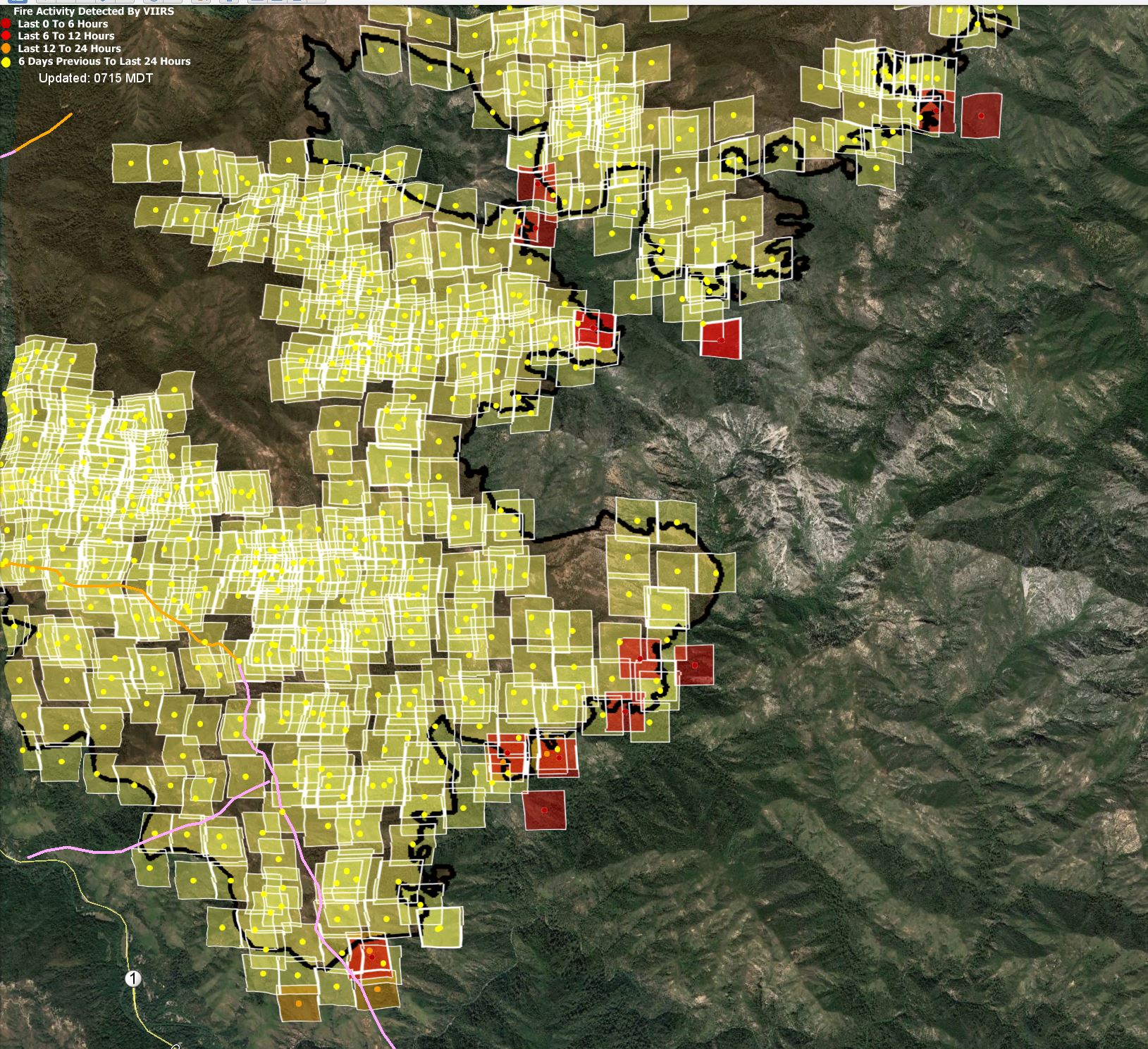Note: more VIIRS and MODIS data has been added below.
No aerial IR data again today. Here’s last night’s official Cal Fire outline, overlaid on the night before’s:
In the west, the expansion is mostly away from structures:
In the east, the gradual push to the southeast continues:
Last night’s MODIS data shows no new hot spots:
Last night’s VIIRS may doesn’t look quite so good:
In the west, we see one hot spot near the fire break that could be back burning, and the continued advancement towards the southeast, plus the joining of the two parts of the fire that had grown apart:
In the east, there is fire moving slowly to the southeast:
[More MODIS data added at 1000]
The next MODIS pass looks more like the VIIRS data, but with lower resolution and less sensitivity:
[VIIRS data added 1230]
The second VIIRS pass of the day added not much more inthe way of hot spots:
Another MODIS pass and a VIIRS pass late in in the dat show activity in the west along the fire lines that looks like back burning, but would be scary if it weren’t:


The orange lines are the dozer fire breaks that were in as of 7/30, plus one that I added by hand. The pink lines are the ones that were planned as of that date. The fat black lines are the outlines of the fire’s perimeter on the official Cal Fire maps from last night.
How to read the MODIS/VIIRS heat indications: The size of the square represents the nominal margin of error. The fire could be anywhere in the square, not just at the center. Dark red squares were detected less than six hours before the data set was created. Light red squares were detected less than twelve hours before the data set was created. Orange squares were detected less than 24 hours before the data set was created. Yellow squares were detected less than six days before the data set was created. When the squares overlay other objects, the color of the square changes somewhat, but the color of the dot in the middle does not. So look at the dot if you’re uncertain what color the square should be. Since the fire is now over six days old, some of the early detections have dropped off the map. MODIS makes mistakes, sometimes missing outbreaks, and sometime misplacing them outside the nominal margin of error. It is also a snapshot of the activity at the time the satellite is overhead, and will definitely miss flare ups between passes. MODIS can’t tell the difference between wildfires and intentional back burns.
Yesterday’s MODIS visible and IR/UV pictures are looking less dramatic than earlier in the fire, which is a good thing:













[…] https://www.kasson.com/bleeding_edge/?p=1938 […]